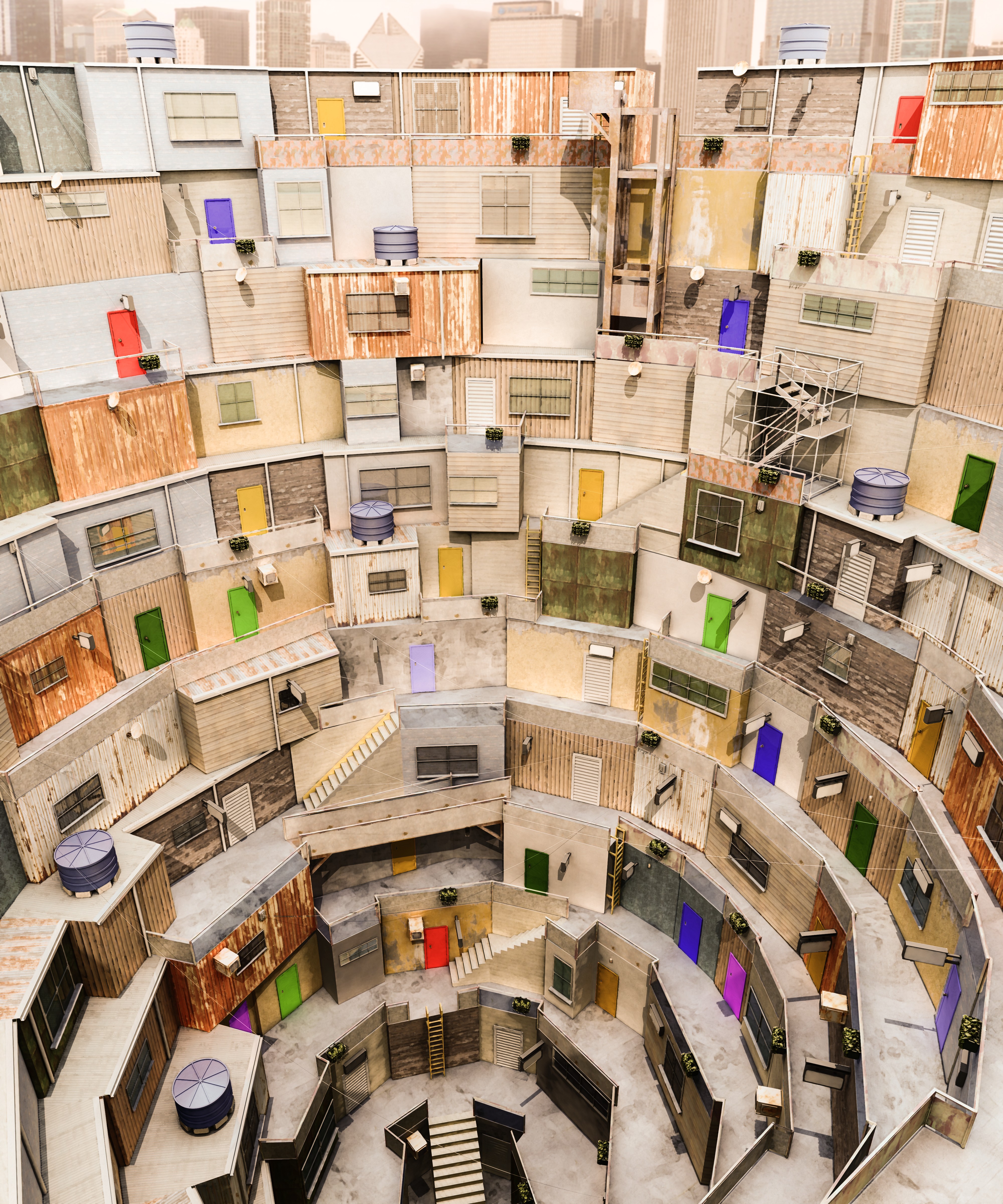The White City and the Void
Contributor
A Tale of Two Cities
Entropy
On the edge of the great plains, the White City begins to crack and splinter. This nexus of power and money has weathered many storms, but its momentum has turned—decay arrives and seeps into its bones.
The White City, a lakefront trading town grown fat on grain and hogs, always sat uneasily on the ground that nurtured it. Men whose wealth was a dividend of the soil built tall palaces of iron and stone, as if fleeing the debt they owed the earth. This tiny, powerful cadre called themselves Insiders. Sinking deep foundations to climb away from the miasma of the workaday city, they came to see their reign in the sky as natural and eternal. Through time, stone was replaced by great curtains of glass and steel; the Insiders drove swathes of elevated highway into the city, sweeping aside the powerless and poor, leaving blighted vestiges in their wake. But the center cannot hold. Resentment and mistrust punctured this divided city and the Insiders hardened the barriers between themselves and the outside world. Their makeshift green zone was protected by rings of reinforced concrete inscribed around the city’s soaring towers. Their walls became their noose, tightening year by year, threatening to strangle them alive as the Outside encroaches. Yet they persisted, building ever-higher, fooling themselves that security and stability live at the highest peak of the tallest tower. These cash-fattened sons of Ozymandias found an architect from across the ocean who promised them the world. His Spire—a twisting, turning masterpiece in white steel and blue glass—would pierce the prairie sky, a beacon of eternal power and permanence. They poured their money into the open arms of this snake-oil charlatan, praying his Spire would secure them against the coming tempest.
She had grown up in the White City, but even a decade ago it was a radically less segregated place. The hardening, subtle at first, quickly became self-reinforcing: new security measures enclosed ever-more space, displaced ever-more citizens and created an ever-increasing resentment that spilled into protest, resistance, and ever-tighter security. Seven years ago her family was ejected into the make-do settlements banked up against the outer wall. The in-between had been empty ever since—abandoned to the elements and the creeping hand of nature. For seven years she and others had been scouting, probing, testing the Insiders’ defenses, preparing for the day the levee broke and returned the White City to its people. Today, scouting north through the blighted liminal zone, her eyes narrowed. A huge void—perfectly round, at least a hundred feet across and the same deep—disappeared into the earth. This was the unfinished foundation of the Spire, the gleaming, towering monument that had exhausted the city’s energies and drained its coffers. The Insiders’ power had waned: the architect had fled with their money, and they were forced to abandon the project to the vicissitudes of time and decay. The great void stared back, silent and empty. Its walls were striated, thick slabs of water-stained concrete and layers of rusty ribbed steel. Dark water swirled around drifts of sandy soil on the concrete floor below. Near the centre of the void, a single weeping willow dappled the surface in shade. Alone in the ruins of her own city, she saw a place to rebuild.
Syntropy
Stepping down from the cracked-concrete stoop into the rushing stream of people, she pulled her old shoulder bag tight. Dodging bodies, she moved through the crowd like liquid, navigating by defensive instinct and muscle memory. Ducking into an alley, the crowd noise fell away, replaced by the thrum of wall-mounted air-conditioning units affixed haphazardly to rough fiber-cement walls. Light spilled from barred kitchen windows, with plumes of steam and the soft chatter of domesticity.
It had been seven years since she discovered the abandoned Void. Her old neighborhood was quickly occupied by the Outsiders and adapted in their makeshift style. Grand edifices were reconfigured into warrens of intimate space; the abandoned city was infiltrated by informal networks growing through, into, and over existing forms. The new urban grammar was unfussy and agile, thrown up by people with few resources and little security. When the outer wall fell, the Insiders were powerless to control this lost territory. Outsiders flocked to the Void, using its structure as scaffolding, their hastily built homes cascading into the hole within months. Outraged, the Insiders attacked the new settlement with shock troops and bulldozers. Time after time, they evicted the Outsiders, leaving the Void an empty pit. Time after time, the Outsiders returned, sprouting like weeds to fill the space anew. The Void became a totem in a war of attrition waged between Inside and Outside. The Insiders’ power to destroy could not match the Outsiders’ will to create; it had been years since the Void was last razed, and the settlement had spilled over into the surrounding streets—a dense knot of urbanity at the very doorstep of the Insiders’ last bastion.
The fate of the White City has turned again. From the outside, the city remakes itself in a new guise. The Insiders’ vision—an eternal monument of soaring towers in glass and steel—has withered and died. Soon the last wall will fall, and Outsiders will flood their sanctum. When they do, they will find that the walls and towers were not a show of strength but a brittle, empty symbol—a symptom of weakness. From their crumbling bastions high above the streets, the Insiders watch a storm roll over the lake. They know it will end them, but they remain frozen and can only await the hand of fate. For the Outsiders, renewal is at hand: the first glimmers of a complex, vital hybrid emerge, and on the edge of the great plains, the White City begins to grow anew.
